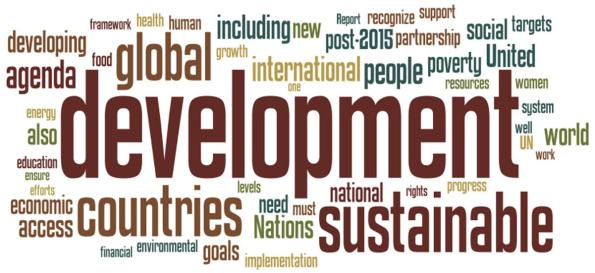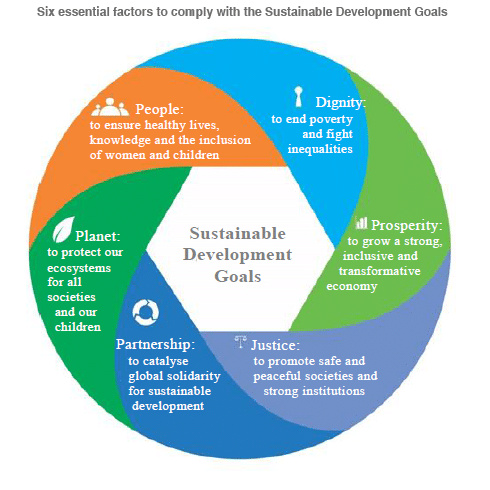
Despite the long and hard road that lies ahead, the world is a better place today than in 2000. It is closer to complying with some of the Millennium Development Goals (MDG) that the countries meeting at the UN set for the end of 2015. The General Assembly will have to renew them next September, but this time in the form of Sustainable Development Goals. Many governments and think tanks are working on proposals. Secretary-General Ban Ki-moon proposed in his report ‘the road to dignity by 2030’, released last December, 17 goals instead of the current eight. Although the simplicity imposed 15 years ago with an iron fist by Kofi Annan will be lost, what can be gained is the creation of a truly global agenda for the next 15 years. Among the proposals, two are especially noteworthy: the eradication of extreme poverty –that of those living on less than US$1.25 dollars (€1.00) per day; and the elimination of hunger in the world.
The Millennium Development Goals, which put poverty and aid in the spotlight, focusing on donors, include reducing extreme poverty and hunger by half, fighting disease, promoting universal schooling for children and achieving lower mortality rates for children under five and during childbirth. They are quantifiable targets set for 31 December 2015. Since 2000, international organisations, governments, foundations and NGOs have provided substantial sums of money, although the economic crisis has largely dried up public contributions.
Hunger affected 24% of the world’s population in 1990 (the starting year for referencing MDGs). The figure declined to 15% in 2012 and should be down to 12.2% by the end of this year. The rate of extreme poverty was 43% in 1990; by 2010 it had already reached the goal of halving it, and it might possibly be reduced to 15% later this year. Lack of access to drinkable water was at 30% in 1990 and will, predictably, be at less than 11% by year end. Infant mortality has also been halved, although the goal was to reduce it by two thirds and success has been very uneven depending on the country involved: Niger has complied with the objective but, El Salvador, for instance, has not. Other objectives have proved to be virtually impossible to achieve, such as universal primary education, despite some progress having been made. Nevertheless, the MDGs have allowed aid to be concentrated on health and education.
In preparation of the new targets for 2030, the High Level Panel of Eminent Persons, called in May of 2013 for five ‘transformative shifts’ that aim to ensure no one is left out of the picture, by (1) ending extreme poverty; (2) placing sustainable development at centre stage; (3) transforming economies to ensure there are decent jobs and inclusive growth; (4) building peaceful societies and fostering open, transparent, accountable governance; and (5) forging a new global partnership for sustainable development.
This is Ban Ki-moon’s base line. His report is timely, as over a thousand new goals have already been proposed here and there. The first five of the Secretary General’s 17 goals refer to eradicating poverty in all forms and places, ending hunger, ensuring that people can lead healthy lives, promoting quality education and inclusive and equitable learning throughout life, and achieving gender equality and the empowerment of women and girls. And, of course, sustainability in many of its aspects.

To agree on the new list will not be easy. Goals should be capable of implementation –ie, subject to a policy agenda– and of being monitored, or, as Ban Ki-moon said, be ‘action-oriented, concise and easy to communicate, and limited in number’. They have to attract donors and private capital, given the decline in public development aid. And care should be taken that no other gaps –such as the technological one– arise. They must be measurable, which will require a huge effort in statistical capacity that many countries lack, since some are not even sure of the exact size of their populations.
To achieve the new goals it is necessary to create a global partnership, as already proposed by Annan and included among the Millennium Goals of 2000. Without it, little can be achieved. It must comprise governments, international institutions, foundations and NGOs, and the global citizenry. To reduce inequality, which has grown markedly in almost all societies since 2000, was not at that time an objective and it remains to be seen whether it can become one for 2030. Reducing the impact of certain diseases, such as malaria, should certainly be a priority and a possibility, since even without a vaccine the cost of preventing a single death from this disease is only US$1,000, as noted by Bjorn Lomborg in an excellent analysis on how goals have evolved –from which derive some of the data presented here–. In any case, it will be difficult to match local priorities with a global agenda, especially when low-income countries seek equal opportunities, and middle-income countries want to improve the quality of their services. Similarly, it will be difficult to match the goals of economic and social development with those of political liberalisation. Nevertheless, the keystone, upon which all others rest, remains the eradication of poverty, in order to make possible what Hannah Arendt called ‘the right to have rights’.


